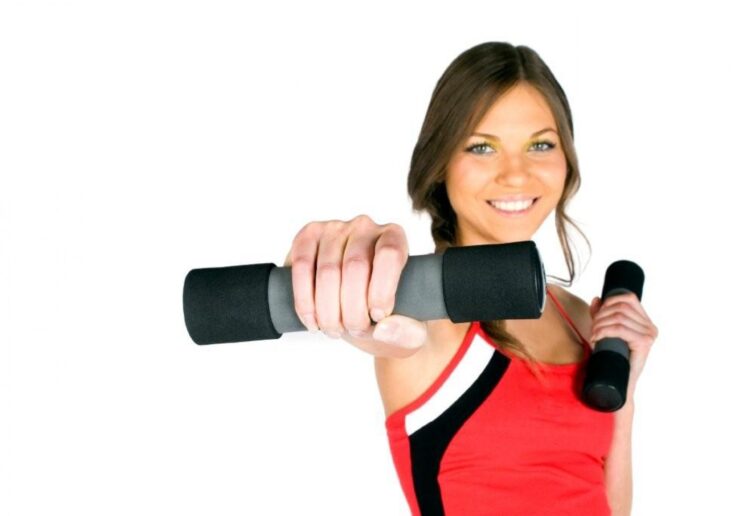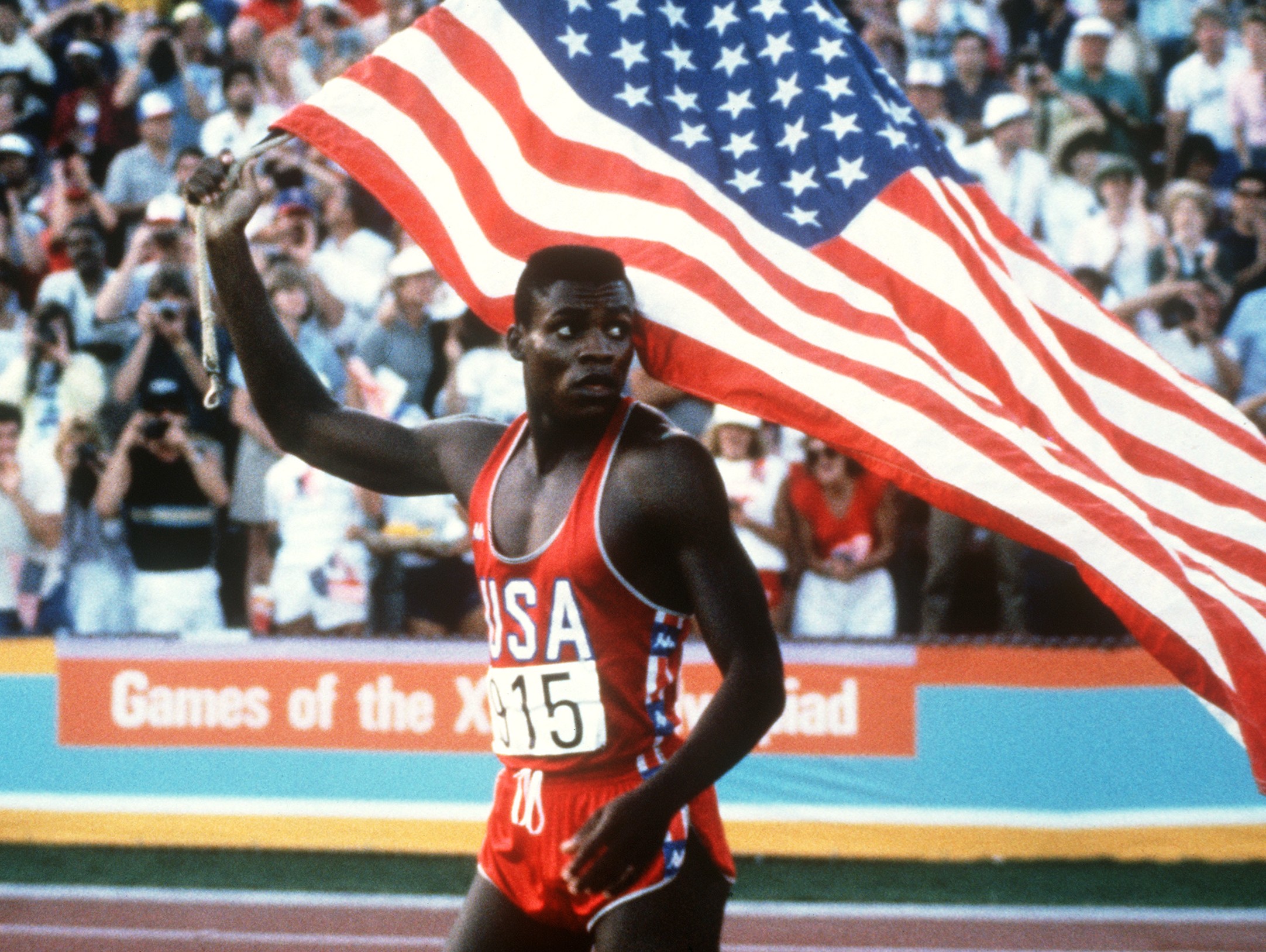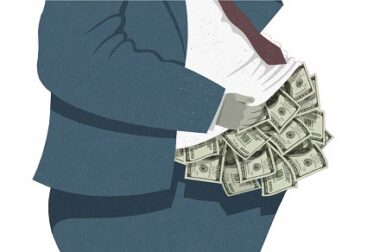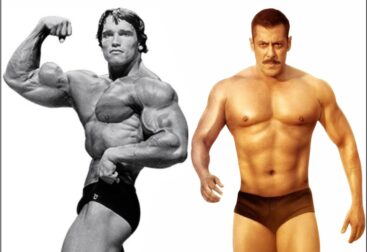Low blood pressure (hypotension) would seem to be something to strive for. However, for many people, low blood pressure can cause symptoms of dizziness and fainting. In severe cases, low blood pressure can be life-threatening. Although blood pressure varies from person to person, a blood pressure reading of 90 millimeters of mercury (mm Hg) or less systolic blood pressure (the top number in a blood pressure reading) or 60 mm Hg or less diastolic blood pressure (the bottom number) is generally considered low blood pressure. The causes of low blood pressure can range from dehydration to serious medical or surgical disorders. Low blood pressure is treatable, but it’s important to find out what’s causing your condition so that it can be properly treated.
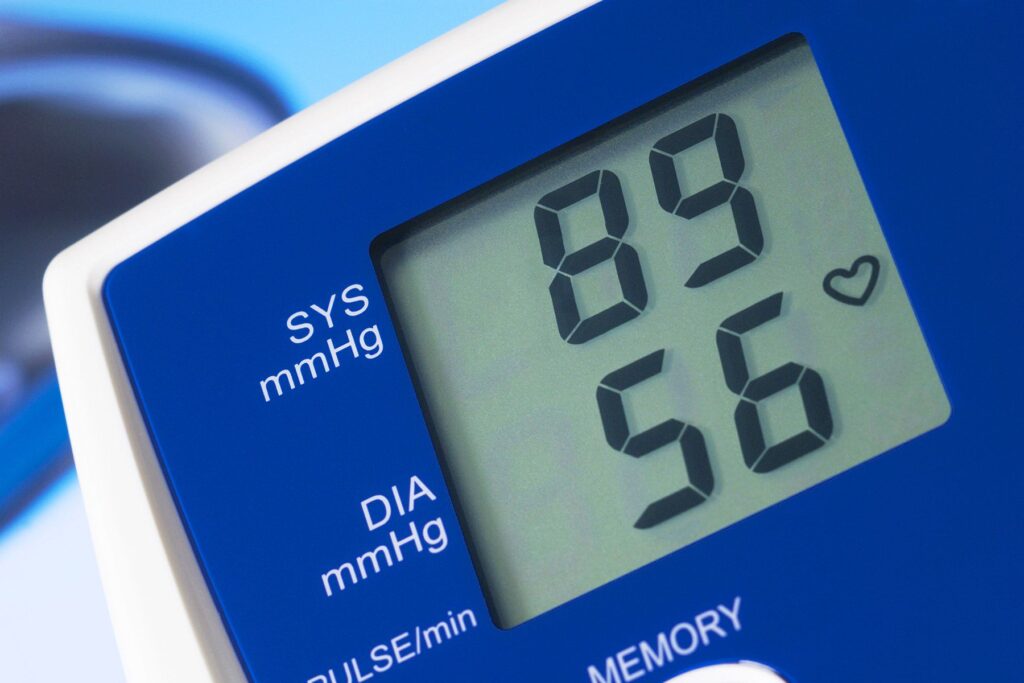
Symptoms
For some people, low blood pressure can signal an underlying problem, especially when it drops suddenly or is accompanied by signs and symptoms such as:
- Dizziness or lightheadedness
- Fainting (syncope)
- Lack of concentration
- Blurred vision
- Nausea
- Cold, clammy, pale skin
- Rapid, shallow breathing
- Fatigue
- Depression
- Thirst
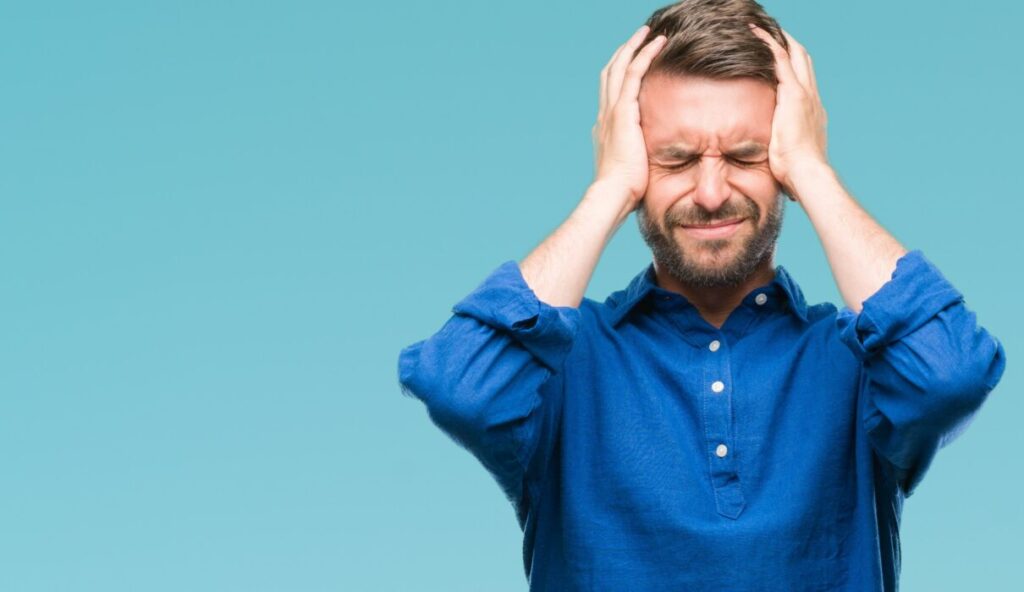
Causes
Some medical conditions can cause low blood pressure. These include:
- Heart disease
- Dehydration
- Blood loss
- Lack of nutrients in your diet
- Pregnancy
- Hormonal disorders
- Severe infection (septicemia)
- Severe allergic reaction (anaphylaxis)
Risk factors
Low blood pressure (hypotension) can occur in anyone, though certain types of low blood pressure are more common depending on your age or other factors:
- Drops in blood pressure on standing or after eating occur primarily in adults older than 65. Orthostatic, or postural, hypotension happens after standing up, while postprandial hypotension happens after eating a meal. Neurally mediated hypotension happens as a result of a miscommunication between the brain and heart. It primarily affects children and younger adults.
- People who take certain medications, such as high blood pressure medications like alpha blockers, have a greater risk of low blood pressure.
- Parkinson’s disease, diabetes and some heart conditions put you at a greater risk of developing low blood pressure.
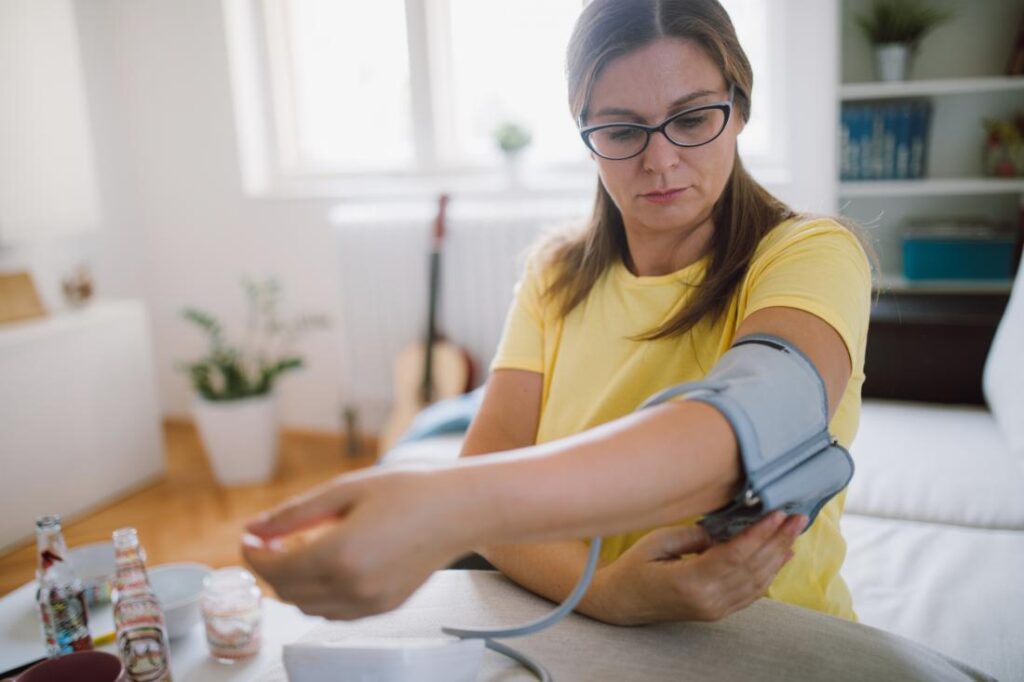
Complications
Even moderate forms of low blood pressure can cause not only dizziness and weakness but also fainting and a risk of injury from falls. And severely low blood pressure from any cause can deprive your body of enough oxygen to carry out its normal functions, leading to damage to your heart and brain.
What you can do if you have Low Blood Pressure?
Low blood pressure that either doesn’t cause signs or symptoms or causes only mild symptoms, such as brief episodes of dizziness when standing, rarely requires treatment. If you have symptoms, the most appropriate treatment depends on the underlying cause, and doctors usually try to address the primary health problem — dehydration, heart failure, diabetes or hypothyroidism, for example — rather than the low blood pressure itself. When low blood pressure is caused by medications, treatment usually involves changing the dose of the medication or stopping it entirely. If it’s not clear what’s causing low blood pressure or no effective treatment exists, the goal is to raise your blood pressure and reduce signs and symptoms. Depending on your age, health status and the type of low blood pressure you have, you can do this in several ways:
Use more salt. Experts usually recommend limiting the amount of salt in your diet because sodium can raise blood pressure, sometimes dramatically. For people with low blood pressure, that can be a good thing.
But because excess sodium can lead to heart failure, especially in older adults, it’s important to check with your doctor before increasing the salt in your diet.
Drink more water. Although nearly everyone can benefit from drinking enough water, this is especially true if you have low blood pressure. Fluids increase blood volume and help prevent dehydration, both of which are important in treating hypotension.
Wear compression stockings. The same elastic stockings commonly used to relieve the pain and swelling of varicose veins may help reduce the pooling of blood in your legs.
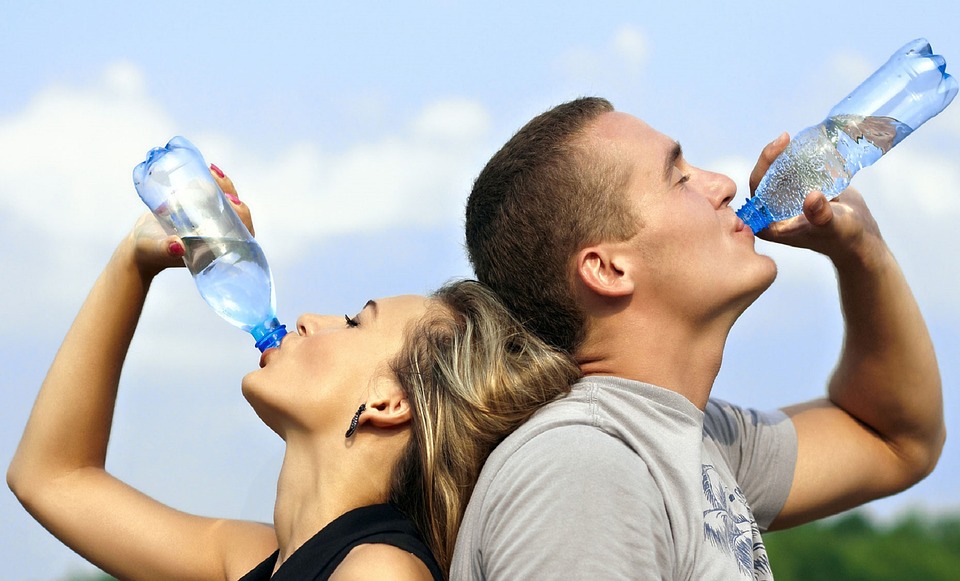
Role of exercises
If you have low blood pressure, some precautions may be needed before exercising.
Some people with low blood pressure experience no symptoms at all, while others might have a brief sensation of feeling dizzy when standing up too quickly. However other people may experience more significant symptoms such as sweating, slow thinking or ‘brain fog’, visual blurring, nausea and feeling light-headed or even fainting. In these cases, symptoms can be triggered by a number of events including standing for a long period of time, being dehydrated or overheated – and exercise. Low blood pressure occurs when blood pressure drops below a systolic reading of less than 90mmHg. That’s the upper number of a blood pressure reading and it indicates the pressure of your blood in the blood vessels when the heart is contracting to pump blood around the body.
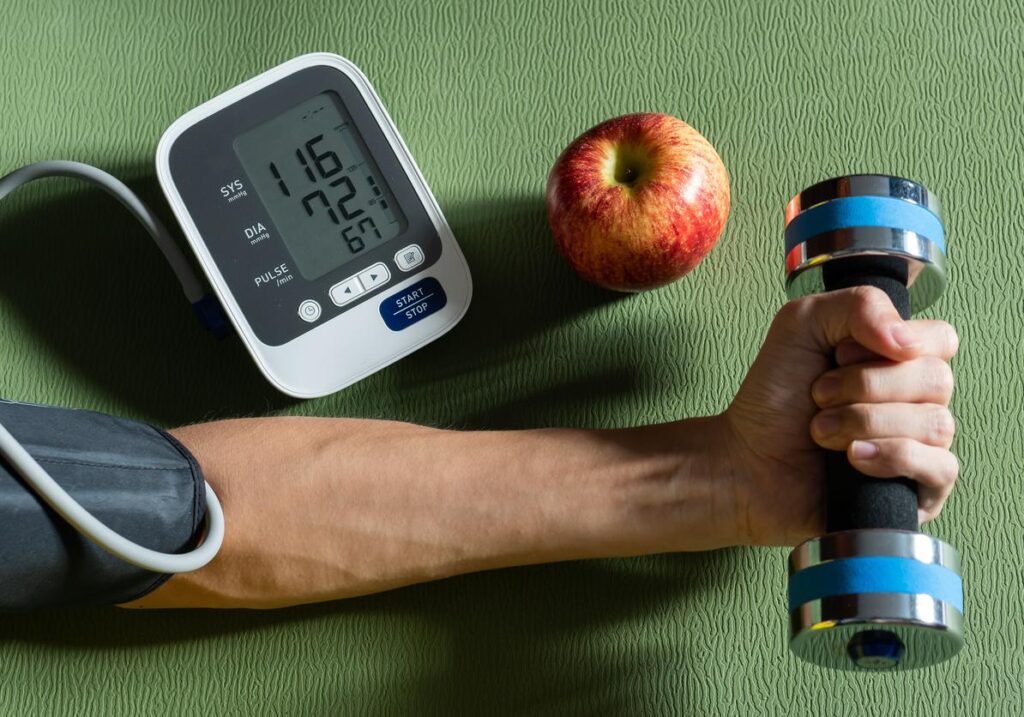
Why does blood pressure drop during exercise?
Normally when you stand up, blood pools in the lower limbs, so your autonomic nervous system should compensate by sending messages to your heart to beat faster and to your blood vessels to constrict. In a person with low blood pressure this isn’t happening adequately. During exercise the muscles need more blood and oxygen and this increased demand can lower blood pressure even more and decrease blood flow to the brain. For people with low blood pressure, exercise can trigger the symptoms associated with a drop in blood pressure. However, this doesn’t mean these people should avoid exercise – in fact, it’s important to keep physically fit, which will help circulate blood around the body. Having strong calf muscles, for example, can help blood flow back to your heart, so lack of exercise can make symptoms worse. Because a sudden change in posture can bring on symptoms, avoid exercise positions in which your head is lifted suddenly from below the heart or when it is supine – level with the heart. This advice also applies to yoga: avoid moving from supine poses into seated poses, from seated poses into standing poses and rising up from front-bending poses. Yoga poses that involve twisting are suitable for people with low blood pressure. People with low blood pressure can consider both aerobic and resistance exercises such as:
- Swimming
- Rowing
- Lower limb resistance training
- Light weight-lifting
- Walking
- Jogging
- Cycling
- Pilates
Because vigorous exercise can make symptoms worse, it is important to start your exercise routine slowly and to slow down gradually before ending the routine. Remember to get up slowly if you are in a sitting, lying or squatting position.

What precautions should you take when exercising?
People with low blood pressure are advised to drink plenty of non-alcoholic fluids (2–3 liters a day, unless they have heart failure or severe kidney disease). They are also advised to drink two glasses of water before doing an activity that may worsen symptoms, so make sure you get enough fluids before you start exercising to avoid dehydration, which can bring on symptoms, and to also increase blood volume. There is evidence that an increase in salt intake can be helpful, but it can also be dangerous for people with heart and kidney disease, so first consult your doctor. Your doctor may suggest having a sports drink that is high in sodium and potassium during exercise, especially in hot weather. Some people are advised to wear elastic support, or compression, stockings that cover the calf and thigh, and they may help keep blood moving around your body instead of pooling in your lower limbs. However, they are not suitable for everyone, so speak to your doctor before wearing them.
What should you do if you start experiencing symptoms during exercise?
If you feel faint, or the other symptoms associated with low blood pressure, stop what you are doing and do one of the following:
- Lie down and elevate your legs
- ·Sit down or squat
- If you cannot sit or lie down, try standing with your thighs crossed, your buttocks clenched, holding your tummy muscles in and with your hands making fists.
- You should drink one or two glasses of water as soon as you can to increase your blood pressure.

Dr Saranjeet Singh
Fitness & Sports Medicine Specialist
Lucknow (UP), INDIA

